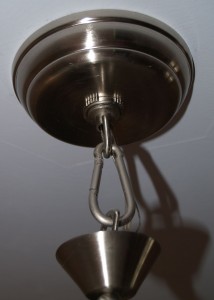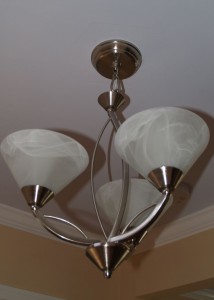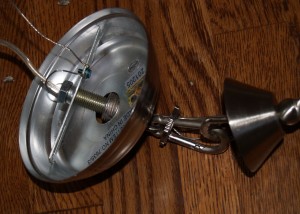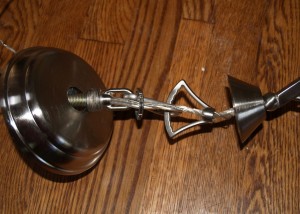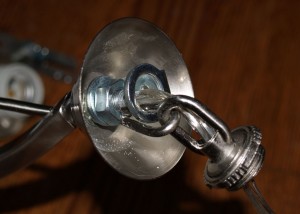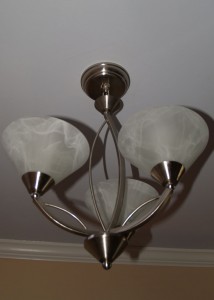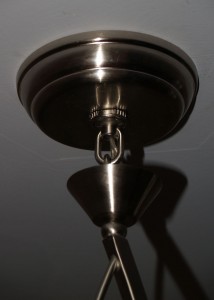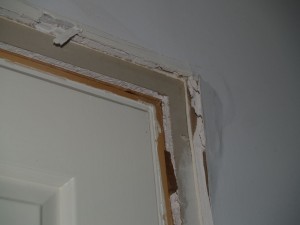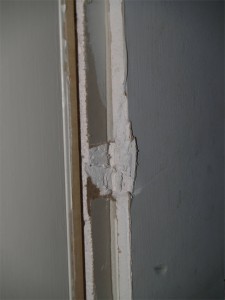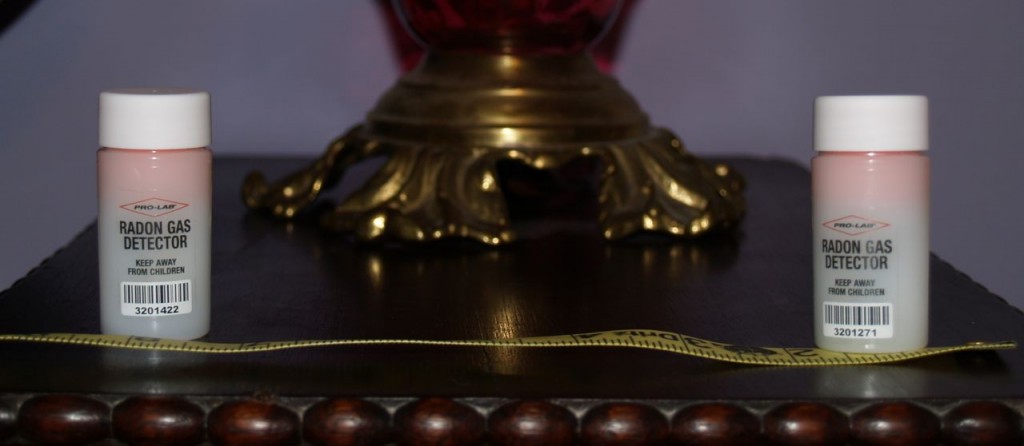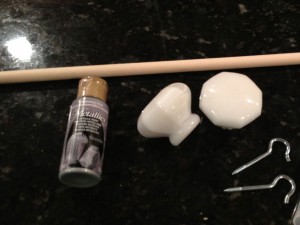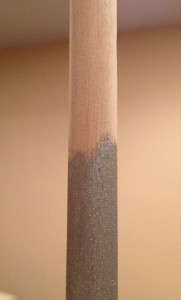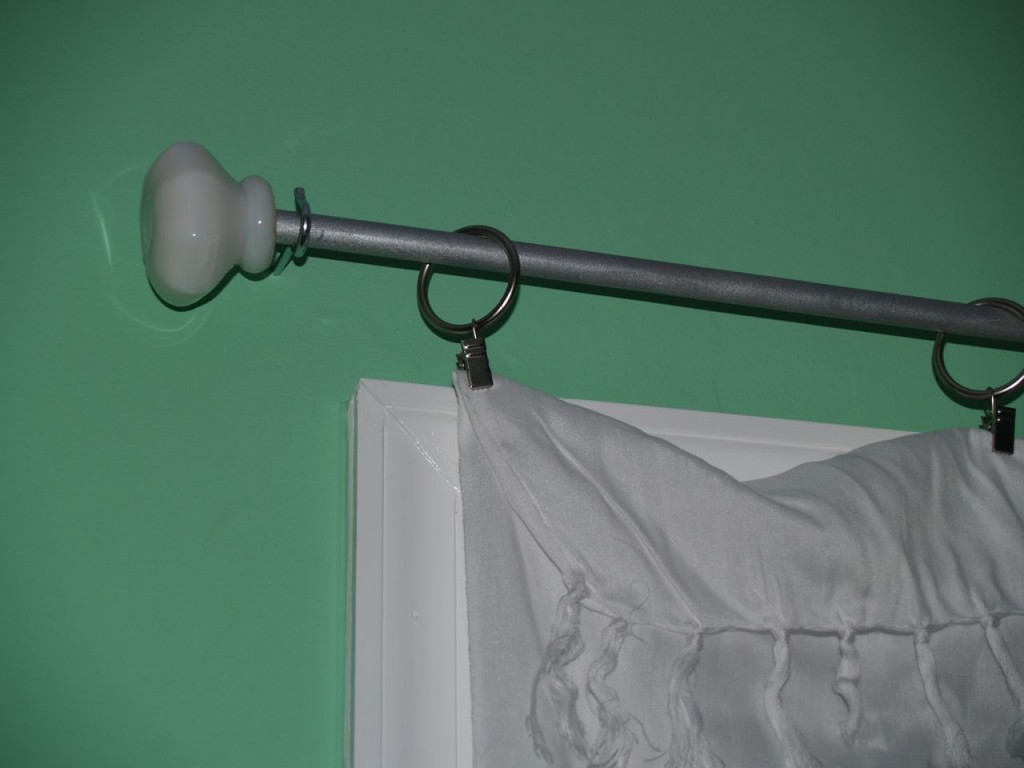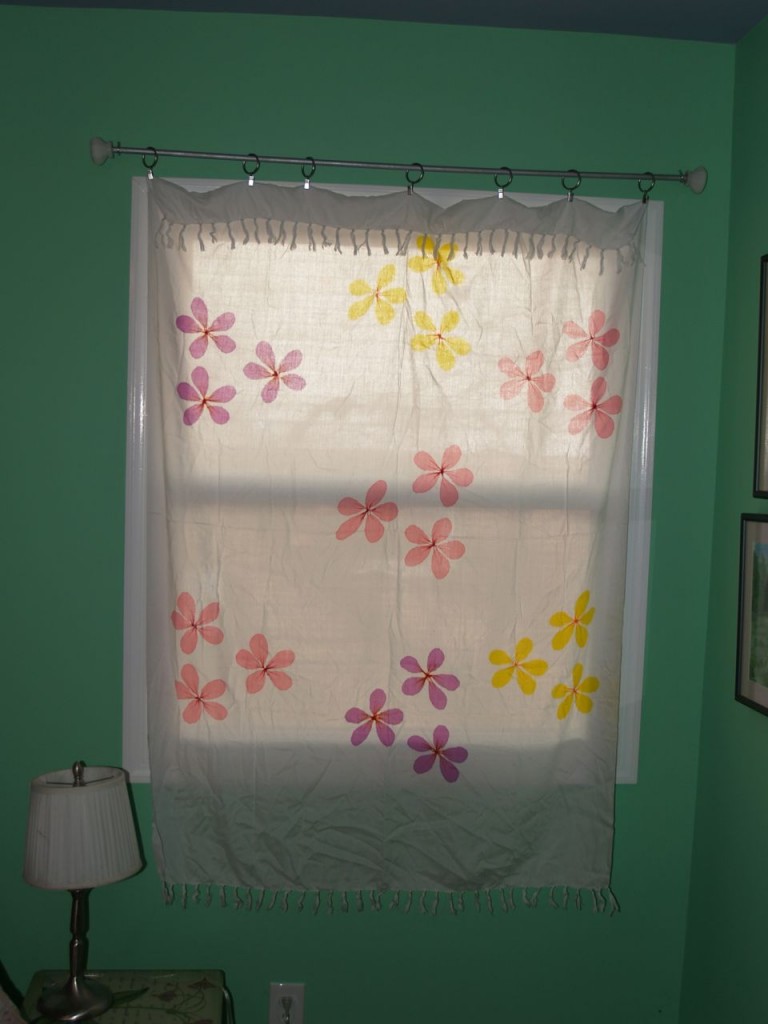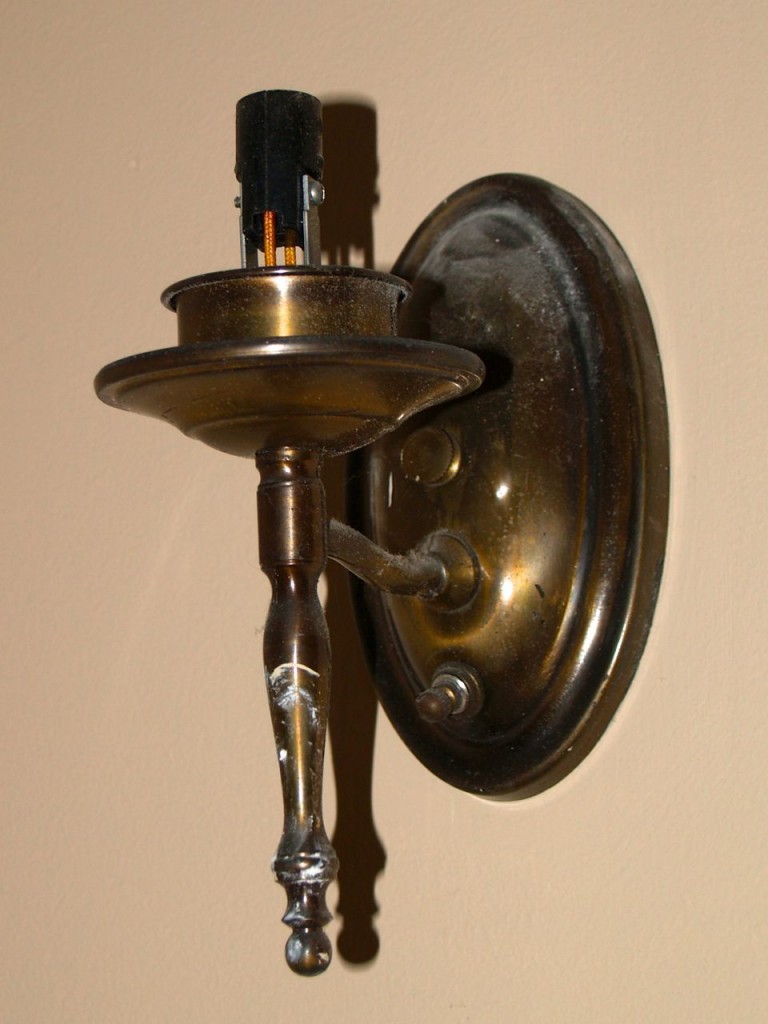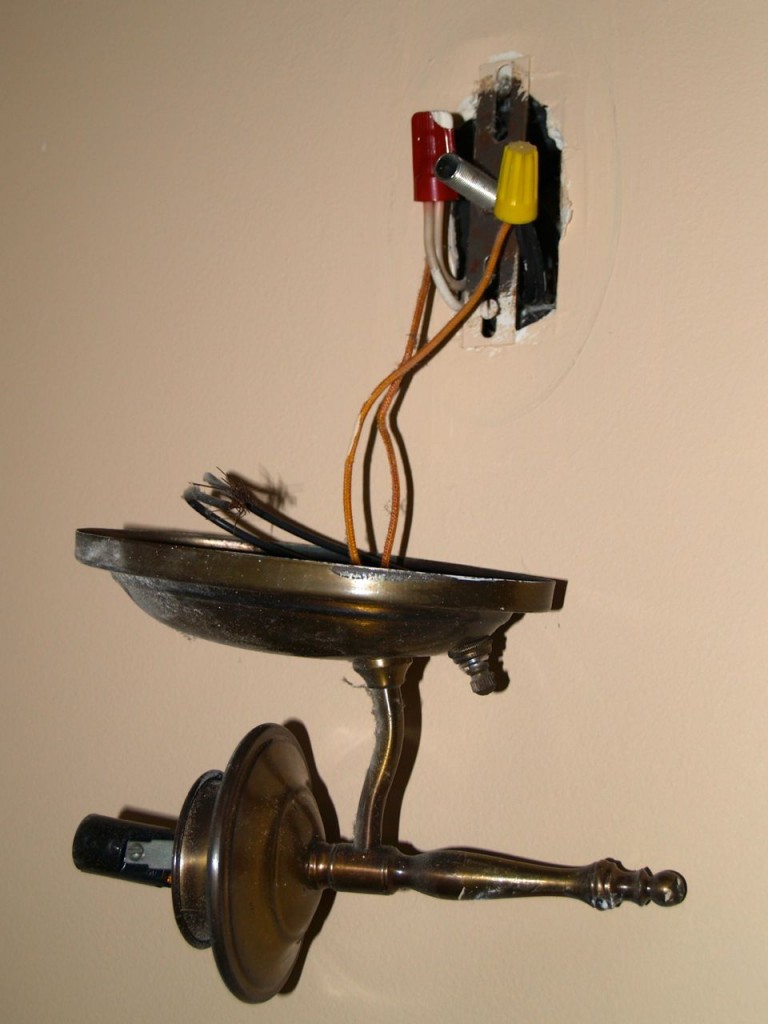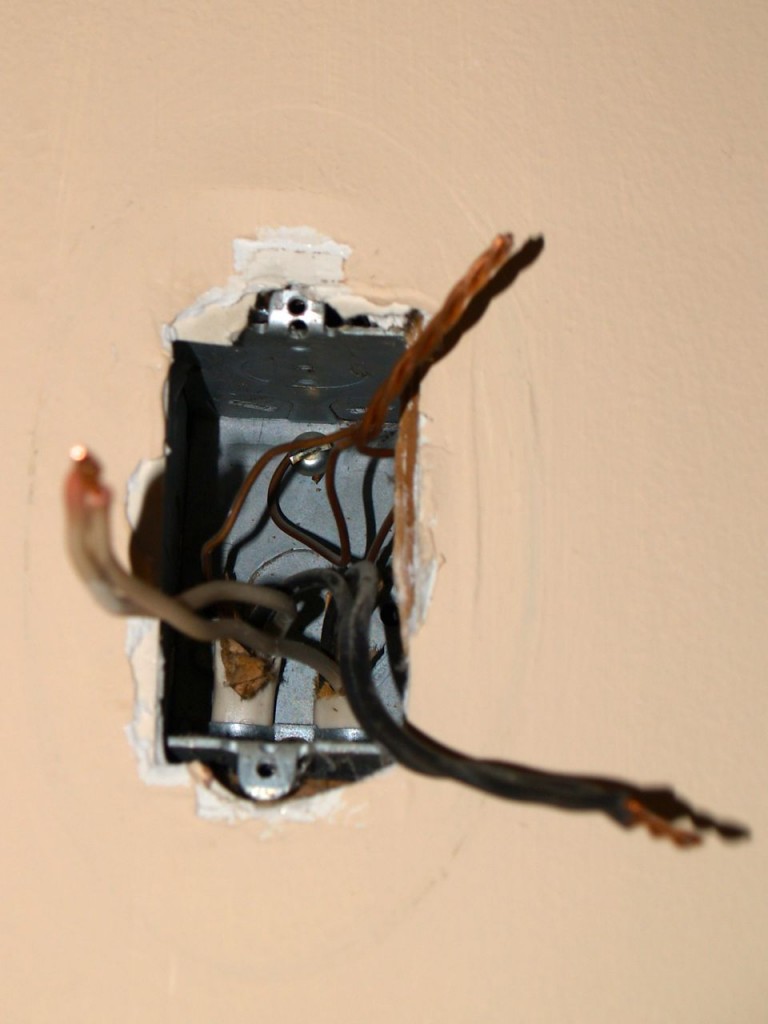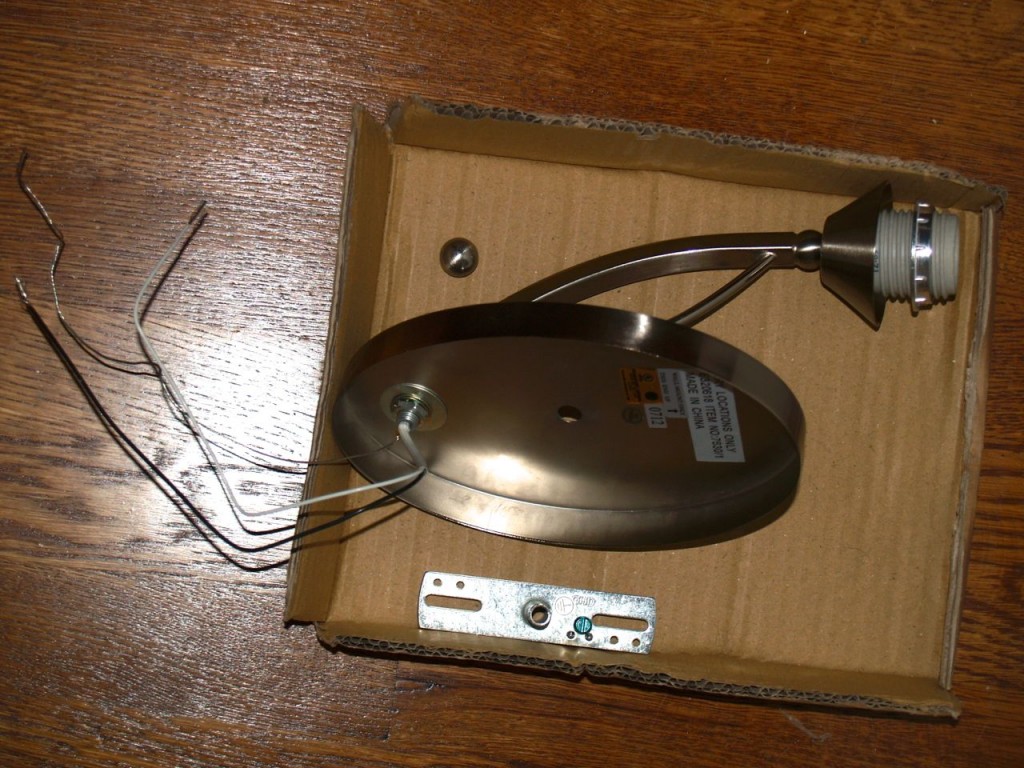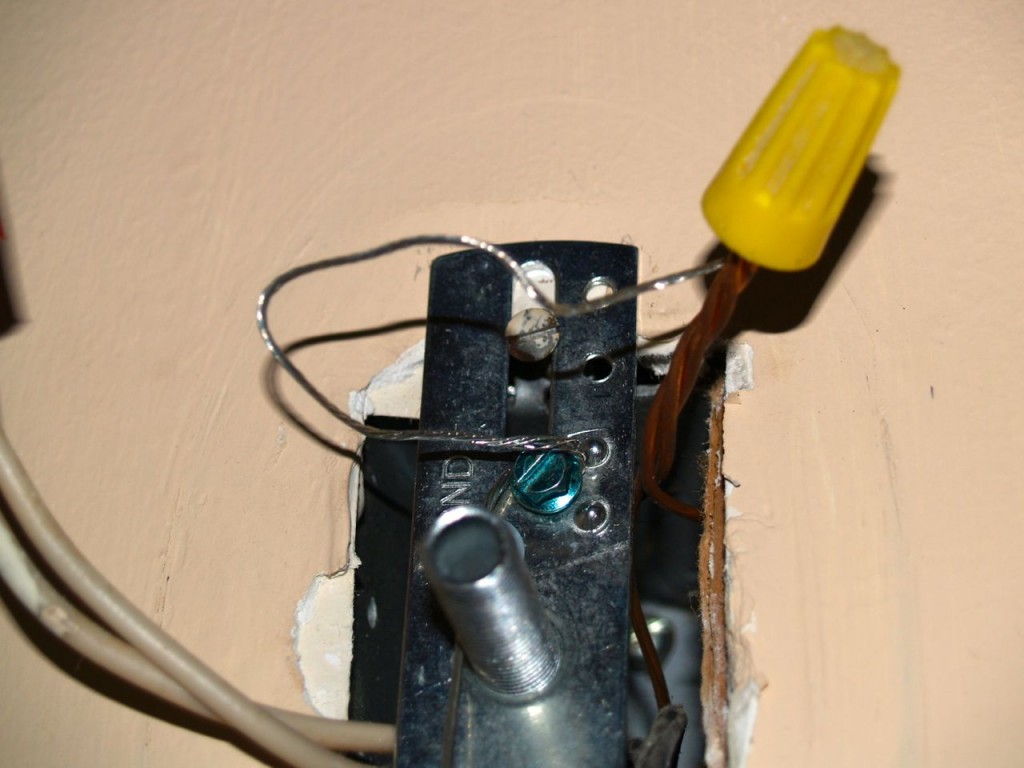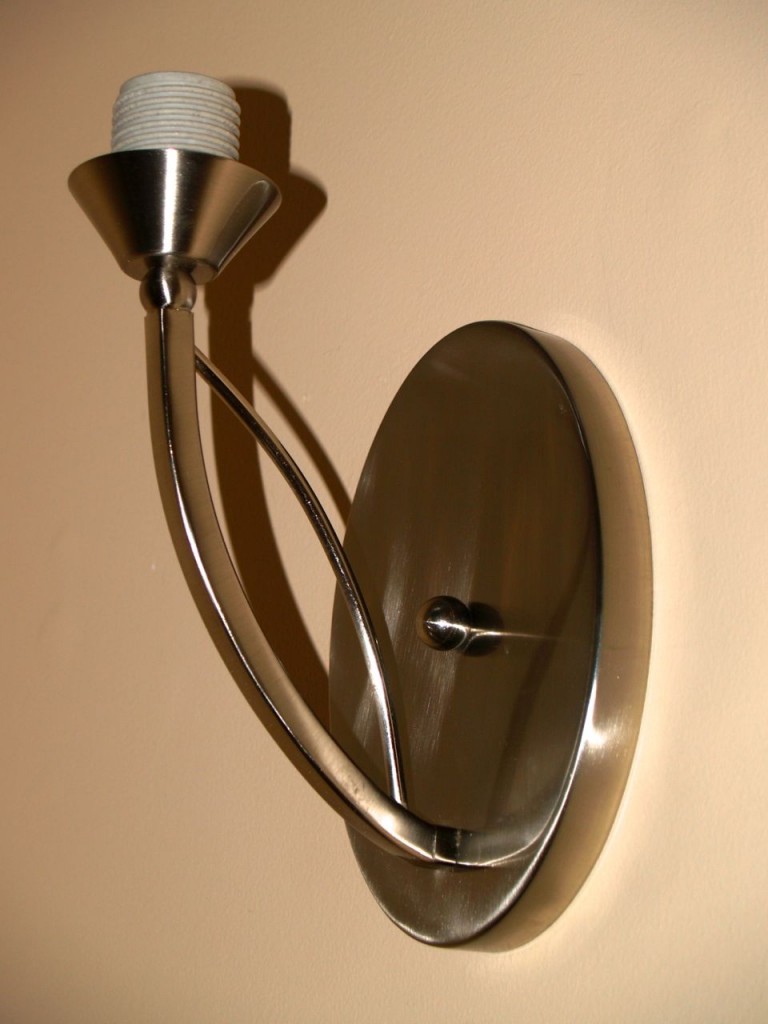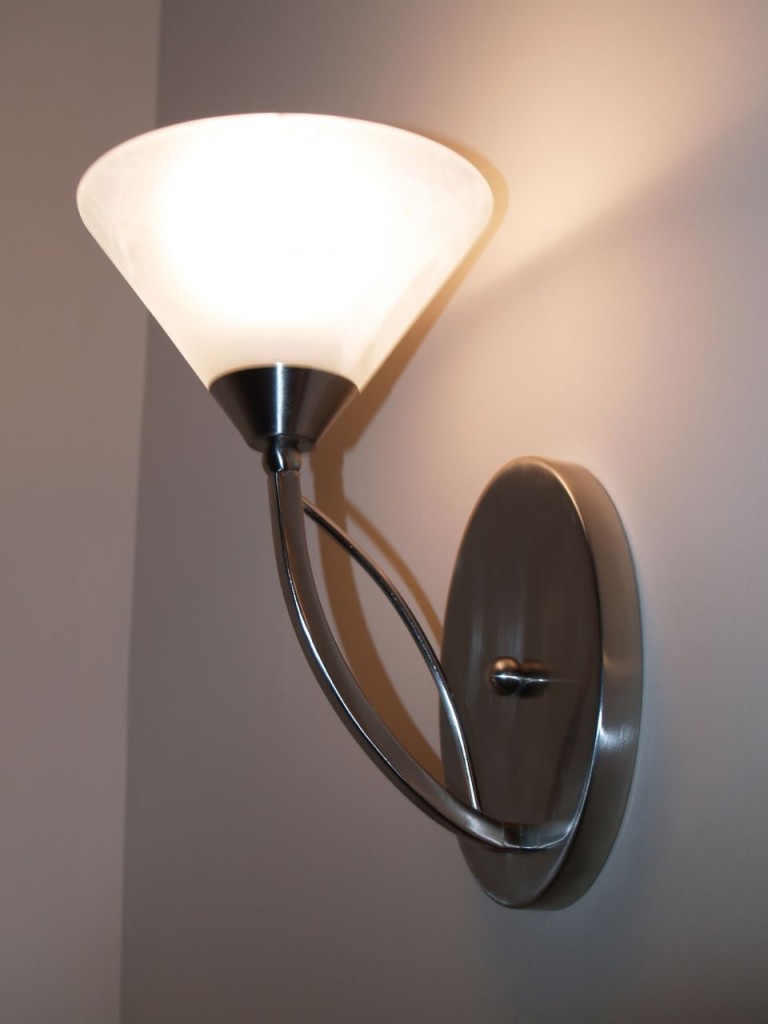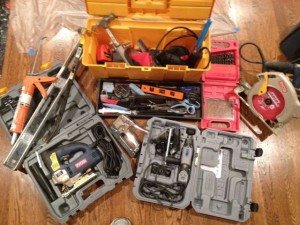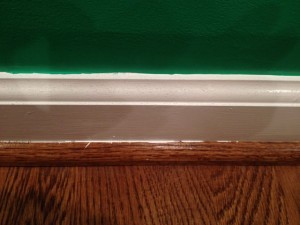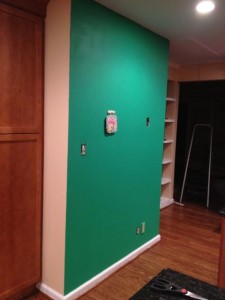As part of my home renovations, I have been installing new light fixtures, including several from ELK Lighting’s Elysburg line. I wanted to use a three light chandelier in the downstairs foyer by the front door and at the second floor landing at the top of the stairs. The only problem is that they hang 22 inches from the ceiling (at their shortest), and since my house has 8 foot high ceiling, this means the chandelier is hanging a little low for an area where people are going to walk. As with all chandeliers, it came with chain to allow it to hang lower, but there is a limit how short it can be. Thus, I decided to hack the chandelier to make it even shorter. Here is the chandelier at its shortest as designed.
The way the chandelier connects to the outlet box is pretty standard.
The simplest way to shorten the fixture seemed to be to eliminate the screw collar loop, clip ring, and canopy nut by somehow connecting the light fixture screw directly to electrical box’s screw pipe. The problem of course is they are two different diameters and threading size. I considered using a bolt that was the same size as the fixture screw, in place of the screw pipe, then just connecting them using a coupling nut. However the light fixture screw is a M10 x 1.0, and after a half hour of internet searching, I couldn’t find a single vender for that size coupling nut. Another method that I thought of later, was to bring the light fixture screw directly to the box crossbar using a nut, then drill holes through the canopy and use screws through those holes to hold the whole fixture up. The problem with that is that I was a little weary of drilling holes in the canopy in case I messed up, and also, I would need decretive screw caps to cover the screws, and I didn’t know how to find those.
What I did, was searched to aisles of Home Depot in search of something I could use to connect the pieces somehow, and I finally came up with the following solution. These are the materials I used. I used the chain that came with the chandelier, a nut to fit the light fixture screw, and a crossbar adjustment kit I found in the electrical aisle. I bought the crossbar adjustment kit solely for the piece that in the photo is outside the package it came in. I have no idea what the piece is, but it looks like to two very strong washers held apart in a parallel manner by a bar.
Here’s what I did. I put the parallel washer thingy piece on chandelier screw, then used the nut to hold it on. I then cut one of the chain links in half and used it to connect the top part of the parallel washer thingy to the chandelier’s screw cap. [You will note that as an engineer, I sometimes use highly technical terms like “thingy”.] I had to use a pipe wrench to bend the cut chain link into a closed loop. It’s rather strong.
The finished chandelier now looks like this. I was able to shorten the entire chandelier by about two inches. Not that much, but enough that hopefully less people will hit their head.
So that’s how I hacked the chandelier. If anyone out there has any suggestions for a better way I could have done it, that does not involve welding, I would love to hear it. Please leave a comment with suggestions.

